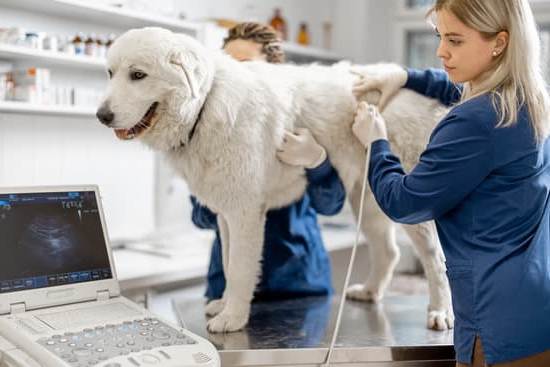How does the clicker work training dogs? Clicker training is a popular and effective method used to train dogs using positive reinforcement. In this article, we will explore the basics of clicker training, the science behind it, how to get started, different techniques, common mistakes to avoid, advanced training methods, and success stories.
Clicker training is based on the principles of operant conditioning and Pavlov’s theory of classical conditioning. By understanding these concepts, dog owners can effectively use a clicker to communicate with their pets and reinforce desired behaviors.
Choosing the right clicker is essential for successful training. There are different types of clickers available, and considerations such as sound volume and ease of use should be taken into account when selecting a clicker for training.
In the following sections, we will delve into the science behind clicker training, provide a step-by-step guide for getting started with clicker training, discuss different techniques such as shaping, capturing, and luring, emphasize common mistakes to avoid when using a clicker with your dog, explore advanced training methods such as adding verbal cues and phasing out the clicker. Additionally, we will highlight real-life success stories that showcase the effectiveness of clicker training for dogs.
The Science Behind Clicker Training
Clicker training is a popular method for dog training that is based on the principles of Pavlov’s theory and operant conditioning. This section explores the science behind clicker training, explaining how these psychological theories play a role in the effectiveness of this training method.
Pavlov’s theory of classical conditioning suggests that a neutral stimulus (such as the sound of a clicker) can become associated with a specific behavior through repeated pairing with a primary reinforcer (such as food). In the case of clicker training, the clicker becomes a conditioned stimulus that signals to the dog that they have performed the desired behavior and will receive a reward. This association between the click and the reward strengthens the desired behavior over time.
Operant conditioning, on the other hand, involves using either positive or negative reinforcement to encourage or discourage certain behaviors. Clicker training relies heavily on positive reinforcement, where the click is immediately followed by a treat to reinforce the behavior. Through this process, dogs learn to associate their actions with desirable consequences and are more likely to repeat those actions in order to receive rewards.
To summarize, clicker training utilizes Pavlov’s theory of classical conditioning and operant conditioning to effectively teach dogs new behaviors while strengthening existing ones. By understanding these psychological principles, dog owners can better comprehend how and why clicker training works.
Choosing the Right Clicker
When it comes to clicker training for your dog, choosing the right clicker is an important consideration. There are a few different types of clickers available, and each has its own advantages and considerations. Here are some key types of clickers to consider:
Types of Clickers:
– Box Clicker: This type of clicker is a small rectangular device that produces a distinct clicking sound when pressed. It is easy to hold and use, making it a popular choice among dog trainers.
– Button Clicker: Similar to box clickers, button clickers produce a clicking sound when the button is pressed. They are compact and easy to carry around, making them convenient for training sessions on the go.
– Whistle Clicker: A whistle clicker combines the functionality of a whistle with a clicking sound. Some trainers prefer this type of clicker because it can be used at longer distances and in outdoor environments.
Considerations:
– Volume: Consider the volume of the clicker’s sound. Some dogs may be sensitive to loud or high-pitched sounds, so choose a clicker with a softer or adjustable volume if needed.
– Size and Ergonomics: Choose a clicker that feels comfortable in your hand and is easy to use during training sessions.
– Durability: Look for a clicker that is durable and can withstand regular use.
It’s important to consider these factors when choosing a clicker for your dog’s training needs.
Next, let’s discuss how does the clicker work training dogs in practical terms. Here are some considerations for effectively using a chosen type of clicker in your dog’s training program:
1. Timing: The timing of the click is crucial in shaping your dog’s behavior. The sound should immediately follow the desired behavior to mark it as correct.
2. Consistency: Be consistent with using the same sound every time you want to mark your dog’s behavior positively.
3. Pairing with Rewards: The click should always be followed by a reward such as treats or praise, creating positive reinforcement for your dog’s good behavior.
Understanding these considerations will help you make an informed decision when choosing the right type of clicker for training your dog.
Getting Started With Clicker Training
When getting started with clicker training for your dog, it’s important to follow a step-by-step guide to ensure success. The first step is to introduce your dog to the clicker and associate the sound with positive reinforcement. This can be done by clicking the clicker and immediately giving your dog a treat. Repeat this process several times so that your dog begins to understand that the click sound means a reward is coming.
Once your dog has made the association between the clicker and receiving a treat, you can begin basic training exercises using the clicker. For example, if you are teaching your dog to sit, use the clicker to mark the exact moment when your dog’s bottom touches the ground, and then immediately give them a treat. This helps reinforce the behavior and lets your dog know exactly what they did right.
As you progress with clicker training, it’s important to keep training sessions short and frequent. Dogs have short attention spans, so keeping sessions brief will help prevent them from becoming bored or frustrated. Additionally, be consistent with your use of the clicker and treats so that your dog continues to understand that the click means they have performed a desired behavior.
Overall, getting started with clicker training involves introducing your dog to the concept of positive reinforcement through association with the click sound. Using a step-by-step guide and being consistent in your training sessions will help set the foundation for successful clicker training for your furry friend.
Clicker Training Techniques
Shaping
Shaping is a clicker training technique that involves breaking down a desired behavior into smaller, more manageable steps. The trainer uses the clicker to mark and reinforce each incremental progress towards the final behavior. For example, if the goal is to train a dog to roll over, shaping would involve clicking and treating the dog for small movements like lying on its side, then gradually progressing to rolling onto its back.
Capturing
Capturing involves using the clicker to mark and reinforce natural behaviors that the dog exhibits on its own. This technique relies on timing and observation to catch the exact moment when the desired behavior occurs. For instance, if the trainer wants to teach the dog to shake paws, they would use the clicker and treat immediately when the dog lifts its paw off the ground naturally.
Luring
Luring is a technique where a treat or target is used to guide the dog into performing a specific behavior. By using food or other enticing objects as a lure, trainers can encourage dogs to follow certain actions such as sitting or lying down. The clicker is used to mark and reinforce the behavior once it’s successfully performed after being lured.
These clicker training techniques provide an effective way for dog owners to communicate with their pets and facilitate learning in an enjoyable manner. Each method has its own advantages and can be applied based on the individual needs of both the dog and its trainer. Understanding how these techniques work is crucial for successful clicker training outcomes.
Common Mistakes to Avoid When Using a Clicker
Clicker training can be an effective tool for teaching dogs new behaviors and reinforcing good behavior. However, there are several common mistakes that dog owners should avoid when using a clicker. One of the most common mistakes is inconsistent timing when using the clicker.
The click should be timed to coincide exactly with the desired behavior, but some trainers may click too early or too late, which can confuse the dog. It’s important for trainers to practice their timing and coordination to ensure that the click is always accurate.
Another mistake to avoid is using the clicker as a bribe rather than a marker for good behavior. The purpose of the click is to mark the exact moment the dog performs the desired behavior, not to lure or tempt them into doing something. Using the clicker as a bribe can lead to dependency on the sound of the click rather than actual learning and understanding from the dog.
Additionally, some trainers make the mistake of using punishment in conjunction with clicker training. Clicker training is based on positive reinforcement and should never involve punishment or intimidation. This can create confusion for the dog and undermine the effectiveness of clicker training.
| Common Mistakes | Effects |
|---|---|
| Inconsistent Timing | Confusing for dogs, undermines training results |
| Using as a Bribe | Lack of actual learning, dependency on sound of click |
| Using Punishment | Confusion for dogs, undermines effectiveness of training |
It’s crucial for trainers to be aware of these mistakes in order to effectively use a clicker in training their dogs and achieve better results. Understanding these common errors can help ensure that clicking training remains a positive experience for both trainer and dog alike.
Advanced Clicker Training
Once your dog has mastered the clicker training basics, you can start adding verbal cues to the commands. This will help your dog understand and respond to your commands even when you don’t have the clicker on hand. Begin by saying the verbal cue just before or as you use the clicker.
For example, if you are teaching your dog to sit, say “sit” just before clicking and treating. Over time, your dog will associate the verbal cue with the action and will respond even without the clicker.
After successfully adding verbal cues to your commands, you can start phasing out the use of the clicker. The goal is for your dog to respond to verbal cues alone without needing the clicker as a prompt. To do this, gradually decrease the frequency of clicks while still rewarding with treats for correct responses.
Eventually, only give treats without clicking for correct responses. It may take some time for your dog to adjust to this transition, so be patient and consistent in your training.
Remember that throughout advanced clicker training, it’s important to continue using positive reinforcement, whether it’s through treats or praise. Positive reinforcement encourages good behavior and strengthens the bond between you and your dog.
Consistency and patience are key when adding verbal cues and phasing out the clicker. This advanced stage of clicker training requires dedication from both you and your dog, but with time and practice, you’ll see great results in obedience and responsiveness from your furry friend.
Clicker Training Success Stories
Clicker training has proven to be an effective method for teaching and training dogs, and there are numerous success stories that demonstrate its effectiveness. Many dog owners have found that using a clicker has helped them communicate more effectively with their pets and achieve desired behaviors.
One success story comes from a dog owner named Sarah, who used clicker training to teach her dog, Max, to be calm and well-behaved when meeting new people. She would click and treat Max whenever he greeted someone calmly, without jumping or barking. Over time, Max learned to associate the clicking sound with the behavior of staying calm, and Sarah was able to phase out the clicker while still maintaining the desired behavior.
Another success story involves a dog named Cooper, who had a habit of pulling on his leash during walks. His owner, John, started using a clicker to train Cooper to walk nicely on the leash. By clicking and treating Cooper every time he walked without pulling, John was able to effectively communicate the desired behavior to his dog. With consistent clicker training, Cooper eventually learned to walk politely on the leash without any pulling.
These success stories highlight how clicker training can be used to effectively teach dogs new behaviors and modify existing ones. The clear communication provided by the sound of the clicker helps dogs understand exactly what they are being rewarded for, making it a powerful tool for dog training.
Conclusion
In conclusion, clicker training has proven to be an effective and beneficial method for training dogs. By understanding the basics of clicker training and the science behind it, such as Pavlov’s theory and operant conditioning, dog owners can better appreciate how the clicker works in training their pets. Choosing the right type of clicker is also crucial, and taking the time to consider various options will contribute to successful training sessions.
Furthermore, getting started with clicker training may seem daunting at first, but by following a step-by-step guide and learning about different techniques such as shaping, capturing, and luring, dog owners can gradually see progress in their pet’s behavior. Avoiding common mistakes and learning about advanced clicker training methods like adding verbal cues and phasing out the clicker are also essential for long-term success.
Finally, hearing real-life success stories from other dog owners who have effectively used clicker training reaffirms the benefits and effectiveness of this method. The positive reinforcement that comes with using a clicker not only strengthens the bond between dogs and their owners but also fosters a happier, more well-behaved pet. With dedication and consistency, anyone can see great results with how does the clicker work training dogs.
Frequently Asked Questions
Is Using a Clicker Good for Dog Training?
Using a clicker can be an effective tool for dog training. The sound of the click serves as a clear and consistent signal to the dog that they have performed the desired behavior, making it easier for them to understand what is being reinforced.
How Do Clickers Train Dogs?
Clickers are used in operant conditioning to mark the precise moment when a dog exhibits a desirable behavior, followed by a reward. Over time, the dog learns to associate the click with a positive outcome, strengthening their understanding of what is expected from them during training.
What Are the Disadvantages of Clicker Training?
One disadvantage of clicker training is that some dogs may become overly reliant on the clicker and fail to perform without it. Additionally, carrying and using a clicker can be inconvenient in certain situations, especially when precision or timing is not crucial for training success. Lastly, not all dogs may respond well to the sound of clicking noises.

Welcome to the blog! I am a professional dog trainer and have been working with dogs for many years. In this blog, I will be discussing various topics related to dog training, including tips, tricks, and advice. I hope you find this information helpful and informative. Thanks for reading!





